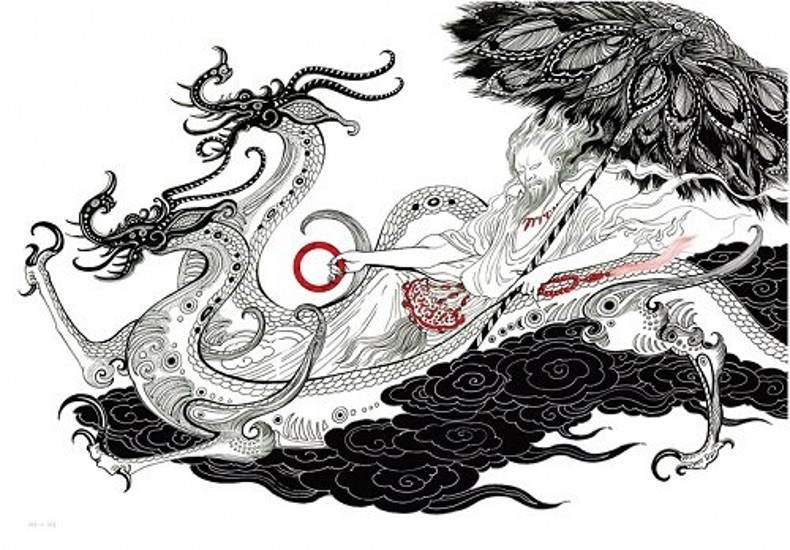

Their records are simple, straightforward and forthright. They are all eye-witness accounts-each person was somewhere. Many are minutely detailed, neatly setting down exact mileage from point to point the remainder, apparently having been written by more poetic souls, disregard mileage and grow lyrical over the beauties of nature. The material itself is complicated by the fact that there is no beginning or ending to any book-each record as we now have it, starts on a mountain peak, wanders from peak to peak, covering 2,000 miles, and winds up on another peak-with no possible way of determining where, on the face of the globe, that first peak may have been located.Įach of the 18 books vary in content-some are a few paragraphs long, others are pages. That which remains to work with is, at the very outset, extremely meagre. Of the ancient Book of Mountains and Seas, there exist today only those fragments that survived the burning of 213 B.C. Again, in the thirteenth century, all records and documents, once more, were ordered condensed-the fifth century original condensations were scrapped.

The remainder was compressed into a few scanty pages-the original volumes were destroyed. Another edict was issued to condense all books. In the fifth century A.D., records and documents concerning China's past, became so voluminous that it was both impossible to study them or to store them. His Premier, Le Sze, advised that the best way to accomplish that end was to burn all books-and therefore, the edict went out. The first Emperor of the Ts‘in dynasty decided to abolish all knowledge of the past and blot out history. In 213 B.C., all books in China were ordered burned. Whether the existing books deal with one country or 18 countries, is not known. Each book is a separate entity but no book has a beginning or an ending. There is no way of knowing whether the total number of books formed a sequence or in what manner one book followed another or even if the 18 books themselves follow in any sequence. The majority of French sinologists agree with the Chinese.Īs stated earlier, there were originally 32 books, and, of the 32 only 18 remain. to the Shan Hai King, stating however, that while its antiquity was certain, the date was disputable. A noted British sinologist has assigned an approximate date of the 10th or 11th centuries B.C. However, the compilation may have been completed after he took the throne. The Chinese say that the record was compiled by the great Yu, at the time when he was minister under the Emperor Shun-prior to the time when he himself was Emperor. We do not know, today, what portion of the earth's surface it covers we do not know if it refers solely to China or to other places as well. Yet, it is referred to, with dignity, as our oldest known record of man's knowledge of the universe on which he lives.
SHAN HAI JING FULL
The book, it appears, has been considered to be so full of whimsy and fantasy that a translation has never been attempted since the waste of time would have been thought stupid. Although frequently referred to, it is an "unknown." No English translation has been made of the whole of it-portions exist in French or German-and Chinese themselves rarely read it. GEOGRAPHERS and historians alike acknowledge the Shan Hai King to be the world's oldest geography. World Digital Library.Ĭhinese Rare Book Collection (Library of Congress) It has been assumed that Shan hai jing shi yi, printed in the 25th year of the Wanli reign (1597), was based on an edition of You tu Shan hai jing issued at an earlier date. A similar work by Jiang Yikui, entitled Shan hai jing shi yi (Annotated classic of the mountains and seas), contains 75 illustrations that are almost identical to the 74 images in this work. The names of two illustrators, Jiang Yinghao and Wu Linfu, as well as that of the engraver, Li Wenxiao, are found at the end of the work. His name appears in the original title of this work. During the Jin dynasty (265-420) the renowned historian Guo Pu (276-324) wrote annotations to it.

The author or authors and the date of composition are unknown. Shan hai jing (Classic of the mountains and seas) is a Chinese classic text describing mountains, regions within and beyond the seas, and mythic animals.


 0 kommentar(er)
0 kommentar(er)
